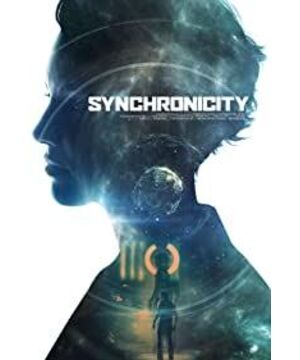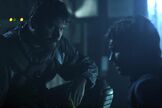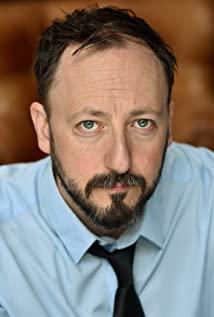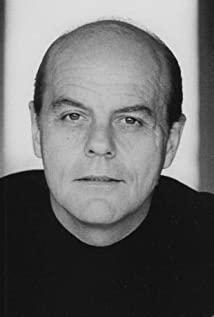Horror and sci-fi films may not be as demanding in terms of cost and technology, but often require polishing to make a film's concept convincing -- which is why some of the most critically acclaimed films are uncommon genres. 2015's "Synchronization" is such a stylized work, a film about traveling back in time and going back in time. As writer-director Jacob Gentley's third film, "Sync" appears to be in the same series as "Blade Runner."
The plot of the film tests both IQ and EQ: scientist Jim Beer (Chad McKnight) strikes a deal with a wealthy businessman who funds his research on wormholes, while he travels through time to try to prevent his men from stealing him 's invention. He later finds himself in the hands of a mysterious girl (Briana Davis) whose friend and foe are unknown. Gentley's old friend, and another star in the film, AJ Bowen, plays Bill's right-hand man Chuck, who helps Bill -- and the audience -- clear up a lot of knowledge about time travel, and discovers that Bill is hiding in The real motivation behind scientific experiments.
In recent years, there have been many wonderful sci-fi independent films that have attracted the attention of moviegoers, such as "Colors of the Reverse Current", "Under the Skin", "The Night of the Comet" and 2015's "Ex Machina". Gentley spoke exclusively to Time.com in Los Angeles last week to talk about the recently acclaimed low-budget sci-fi film. He believes that no matter in terms of commercial value or artistic value, this type of film is just a by-product of the development of the film industry, not a special catalyst.
"Sync" trailer
"I think the success of this film is related to the law of development of the industry itself," Gentley said, "The history of film development for more than 100 years tells us that the development of film has its own laws of rise and fall, and the emergence of new things is like a wave. It's impossible to predict. For example, independent horror films, which emerged in the late 60s and 70s, gradually disappeared, then made a comeback after Halloween in the 80s, and then revived five or six years ago. I think the development of low-budget sci-fi movies is like a wave. Same."
Bowen had starred in Gentley's first film, "Signal," and the two were good friends for more than two decades. Bowen, who has worked on several independent films including "Sacrament," "Dead End," and "You're Next," believes that the story of "Sync" is a metaphor for how each film was born. "It takes a lot of miracles to make a movie and get it out," he said. "First someone comes up with a great idea, then you do a lot of work around that idea, come up with a logical storyline, and then it takes constant Discuss, and in the end, someone needs to invest. The process of making a movie is full of difficulties, so every movie that comes out can be said to be a miracle.”
AJ
Bowen said, “Movies like horror or sci-fi are the most attractive to me. The thing is, you can use metaphors to tell the story. In a romantic comedy, you may need to convey a message to the audience; but the genre can set the tone and atmosphere because of its own unique aesthetic taste, so you can be a little deliberate arrangement.”
“That means you have to complicate a simple story, and that really helps the story,” Bowen continued, “Maybe the story is simple: the hero is inexorably in love with the heroine, and The heroine also loves the hero, but you have to elevate the story to the level of fate - 'If I could travel back in time and space, would I change some choices?'"
There are many things to consider both on the surface and inside of the story place. Gentley devoted a lot of time to thorough and comprehensive consideration, hoping to ensure that the conceptual and emotional foundations of the film were consistent and connected. "I did a whole lot of thinking, thinking back and forth between concepts and emotions," he said, "such as story logic, film structure, and emotional aspects, hoping to present the best results.
"
“It takes all parts of the brain,” he says. “You have to keep juggling logic and nuance to get something compelling on screen.” Gentley admits that his initial idea may have been A bit of a budget-minded, too ambitious. But unlike the protagonist Jim Beal, he attributes the success of the film not only to his partners, but also to his own insistence on the quality of the film, a belief that allowed him to overcome all the obstacles on the road to film. He recalled, "I was always single-minded and charged forward when shooting a film, believing that we would succeed. Because the budget was so small, everyone had to save in every aspect so as not to embarrass themselves.
" Budgeting to create an imaginary vast universe is risky," he admits, "but I'm glad I chose to ignore it, naively and even foolishly, because only I have the courage to face the challenge by rushing forward. So, I want to thank everyone for their persistence in the film, otherwise I would never have been able to do it alone."
Chuck and Bill's relationship has many similarities to Bowen and Gentley's. "We've done a lot of roles together, and we've been through a lot of questioning," Gentley admits. "It's the closest friends, you can tell them the real truth, you don't have to hide it, and they'll treat you the same way. "
Synchronization" stills
Bowen felt the same way. "In this respect, we are a bit like old couples who have been married for many years," he said. "After he sent me the script, I probably knew what he was thinking. When I read the script I read what he meant like I read the Rosetta Stone. I know it's very ambitious because we always try to do three dollars for one dollar...because we know each other well, because we Together we can make efficient decisions because we’ll try to do something ambitious rather than take the easiest path.”
As a result of being "ambitious", they chose to tell a long but unusual story - the invention of a scientist with no distractions stolen by assistants involved in its development. Gentley said he felt the biggest challenge was to test the audience's knowledge of time travel: Is the structure of the story as they intended? How can I make them feel refreshed? "In the early script, I wanted the film to be a palindrome," Gentley says, "so that the story's timeline could be connected end-to-end. But then I found that the audience was familiar with the structure, so I let it go. Time travel happens early in the first half of the story."
"Come with me, I'll show you the events, you'll get a whole new perspective, but I don't want to turn it into a replay either, because that's too long," He continued, "It's still very tedious, so I hide these events in the background to give the audience more perspective. But it's hard because very few audiences will want to go back to the theater to see it again.
" "Stills
"Synchronization" was released in theaters and video-on-demand channels on January 22, and audiences could have unlimited chats on online forums. The use of streaming media enables the rapid spread of film information, and the number of people watching the film increases. Even if the film can't compete in commercial value with blockbusters backed by major studios, Gentley still expects to bring audiences an impressive experience. "I just wanted to tell an independent sci-fi story, close to a wider sci-fi world. Fortunately, our technology is not far behind, which reduces the difficulty and cost of film production."
"If everyone has free access to equipment , then it’s not just for the rich anymore,” Bowen added. “All creative people can take the time to learn how to make movies. Especially now that there is a video-on-demand system, everyone can Tell the story from your own point of view. In a low-budget world, your film may not be as polished, but it can have an exciting plot. That’s what we as independent filmmakers strive to achieve.”
View more about Synchronicity reviews











